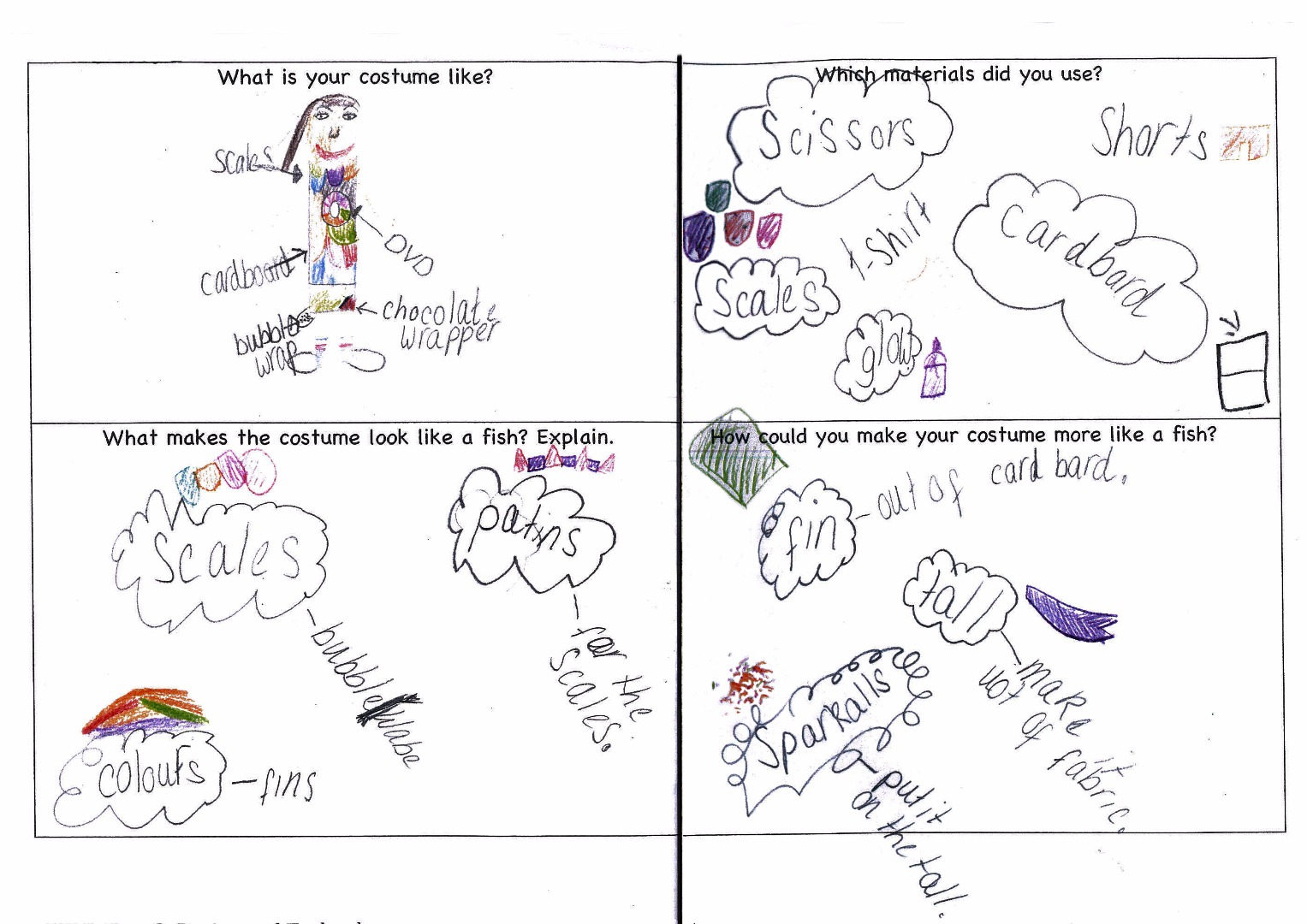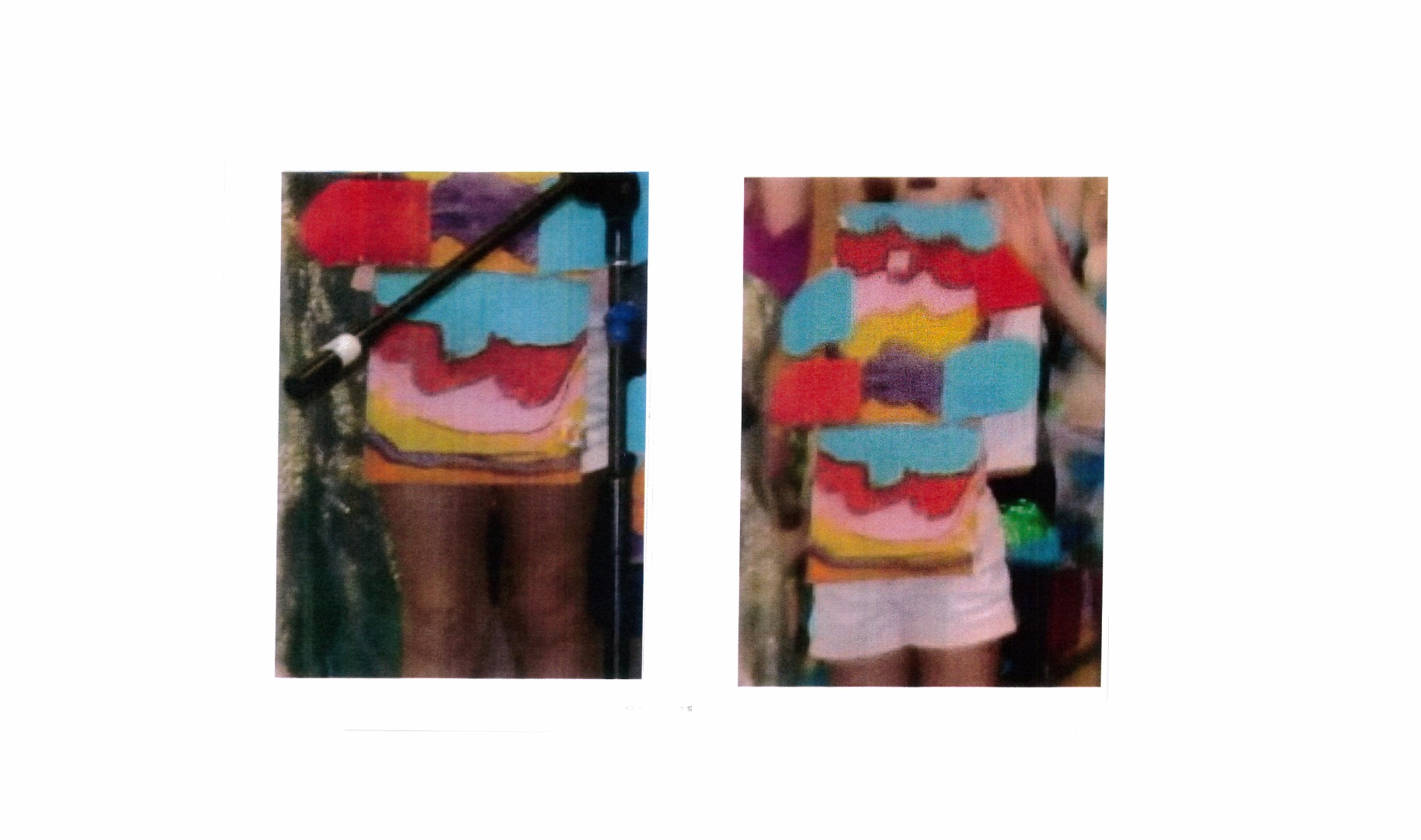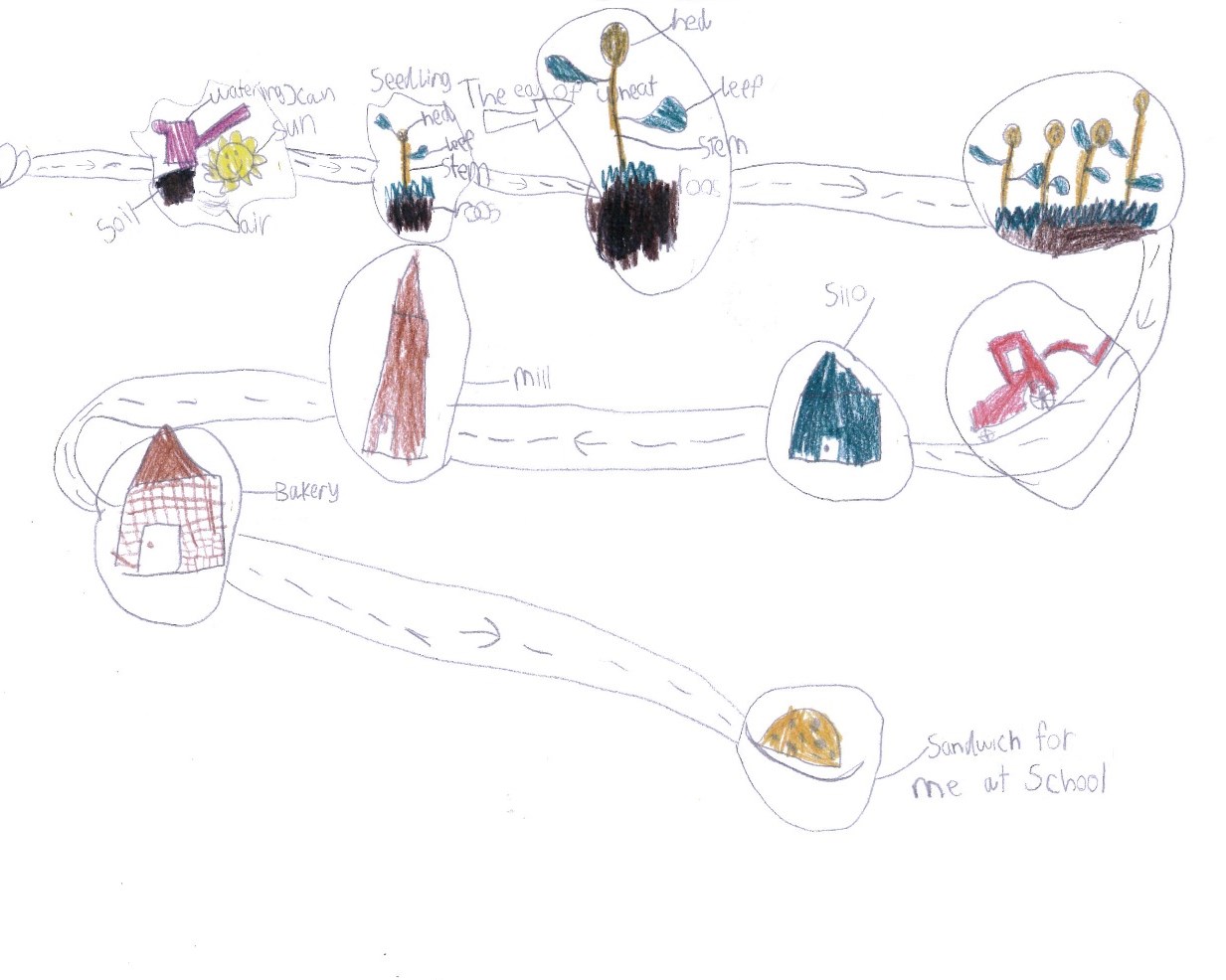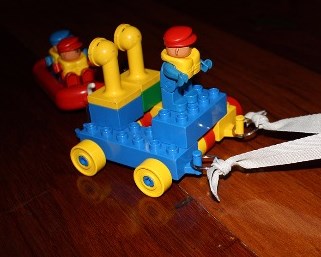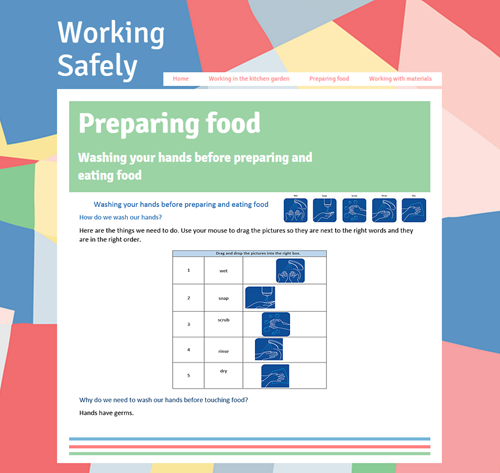Design project: Rainbow costumes
Summary of task
Students designed and produced costumes for a performance based on the book The Rainbow Fish by Marcus Pfister. They gathered information on materials, colours, special effects and design features. They generated and evaluated ideas for their costumes. Students used a range of skills including cutting from a template, sewing, and using a hot glue gun (under supervision) to add two-dimensional shapes (scales) to a T-shirt. Students were challenged to source materials without spending much money to develop some understanding of recycling and re-using materials. They reflected on the product and the processes used, looking at ways to improve the product or strategies to work more effectively.
The focus of this task was to design a product for the technologies context materials and technologies specialisations.
Achievement standard
By the end of Year 2, students describe the purpose of familiar products, services and environments and how they meet a range of present needs. They list the features of technologies that influence design decisions and identify how digital systems are used.
Students identify needs, opportunities or problems and describe them. They collect, sort and display familiar data from a range of sources and recognise patterns in data. Students record design ideas using techniques including labelled drawings, lists and sequenced instructions. They design solutions to simple problems using a sequence of steps and decisions. With guidance, students produce designed solutions for each of the prescribed technologies contexts. Students evaluate their ideas, information and solutions on the basis of personal preferences and provided criteria including care for the environment. They safely create solutions and communicate ideas and information face-to-face and online.

